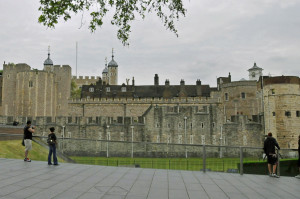The Tower of London is one of England’s most popular destinations. Well rehearsed “Beefeaters” explain its history with ghoulish delight and the crown jewels dazzle visitors riding past them on a people mover. But the glib and the glitz mingle with the ghastly.
At the heart of the 18-acre Tower complex is a castle erected in 1078 by William the Conqueror after he crossed the English Channel and defeated Anglo-Saxon King Harold. A series of buildings and towers were added later in two concentric circles around the original castle. Although used for many purposes, the Tower of London has served as a prison almost from the beginning and its stone towers have been the scenes of crimes and intrigue.
The so-called “Bloody Tower” memorializes two young princes murdered there by their uncle, the future King Richard III. The Wakefield Tower, where King Henry VI was murdered as he prayed, displays a collection of instruments of torture, used to extract “confessions” from those whose religious beliefs didn’t match those of the monarch. The most frequently used instrument was the Duke of Exeter’s Daughter, named after the Constable of the Tower who introduced it. Ropes wound around oppositely rotating drums stretched the victim on a rack, inducing pain so severe that a confession was almost inevitable.
Although known for its beheadings, the Tower of London itself was the scene of only a few executions. Condemned prisoners not deserving the privacy of a Tower execution were killed on nearby Tower Hill, their newly severed heads held high for the cheering crowds. As told by the Beefeaters, Tower executioners were notoriously inept, one taking eleven whacks of his axe before finishing off the Countess of Salisbury. Another, a butcher by trade, completed his job with a knife. Anne Boleyn was afforded the courtesy of a French swordsman, who dispatched her on the Tower green with one stroke.
A trip to London isn’t complete without a visit to the Tower. But expect not only to be entertained, but to be reminded of how cruel human beings can be to each other, often in the name of religion.
